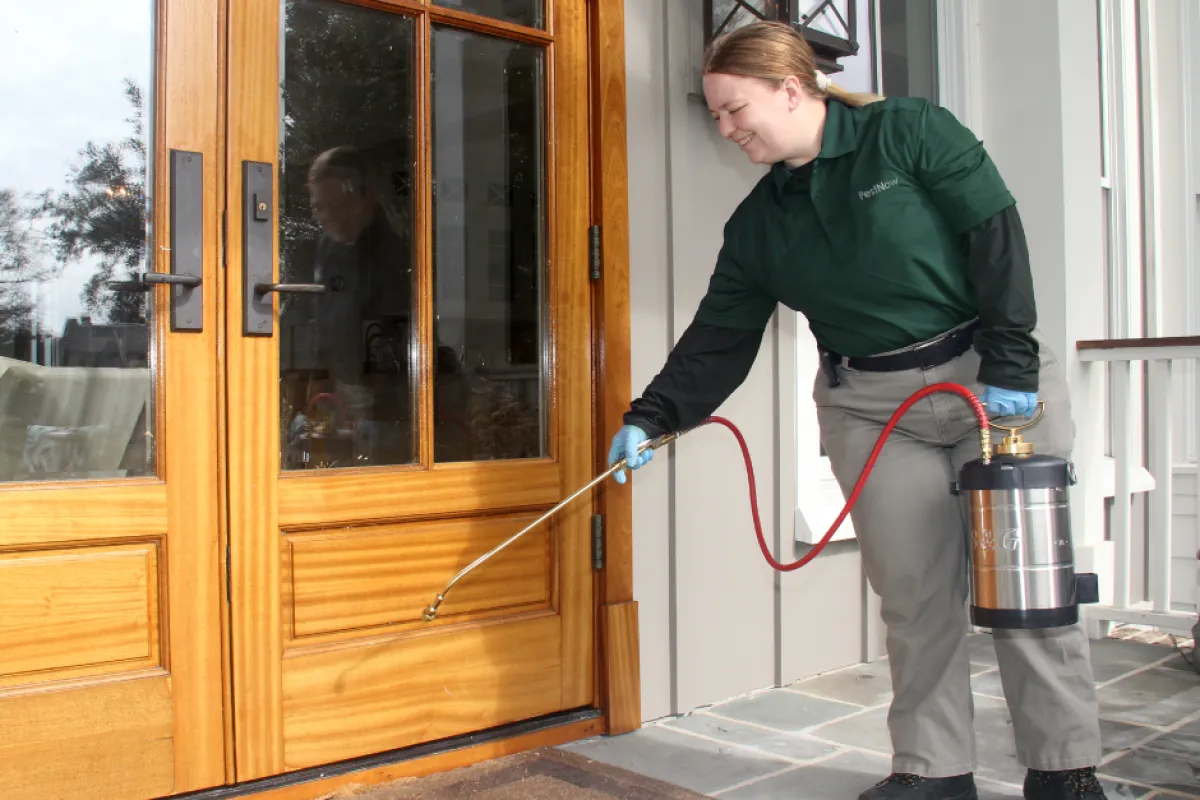A1 Charlotte Pest Control Companies - Your Local Pest Experts
Bed Bug Treatment Failure: Comparing Chemical Vs. Non-Chemical Solutions
In the world of insect control, specifically when taking care of the persistent problem of bed bugs, the option in between chemical and non-chemical treatment solutions can be an essential one. Both approaches use distinctive advantages and downsides, influencing elements such as performance, safety factors to consider, and general expense. By examining the nuanced details of each approach, a clearer understanding of which path to go after in resolving a bed bug invasion can be acquired.
Efficiency of Chemical Therapies
Chemical therapies for bed bug invasions have actually been extensively identified for their powerful and quick efficacy in eliminating these bugs. When taking into consideration the effectiveness of chemical treatments, it is important to recognize that they can provide a detailed and quick solution to a bed bug problem. Expert exterminators frequently rely upon insecticides to target bed pests at numerous phases of their life process, consisting of eggs, fairies, and grownups. These chemicals normally function by interfering with the bed pests' worried system, bring about paralysis and ultimate fatality.
Moreover, chemical therapies have the benefit of using residual effects, indicating that they can proceed to eliminate bed bugs also after the preliminary application. This residual activity is especially useful in combating any possible re-infestations. Furthermore, the rapid activity of chemical treatments can bring relief to people dealing with severe bed insect invasions, permitting them to gain back control of their home swiftly.
Security Problems With Chemical Solutions
One essential aspect that needs cautious consideration when making use of chemical solutions for bed bug treatment is guaranteeing the security of residents and the environment. Exposure to specific chemicals made use of in bed pest treatments can lead to respiratory system problems, skin inflammation, or other unfavorable responses, especially in individuals with pre-existing conditions or level of sensitivities.
In addition, the ecological influence of chemical options is one more substantial consideration. Some pesticides utilized in bed insect treatments may be harmful to beneficial pests, wild animals, and ecological communities if they seep right into the soil or water supply. It is essential to make use of chemical therapies sensibly, following safety standards, and thinking about less toxic alternatives to mitigate these threats and ensure the efficient and safe administration of bed insect infestations.
Advantages of Non-Chemical Techniques
Thinking about the potential safety and security worries and environmental impact related to chemical remedies for bed insect therapy, checking out non-chemical approaches offers an appealing choice with a number of distinct advantages. Non-chemical methods supply a much safer alternative for families, especially those with individuals, youngsters, or animals delicate to harsh chemicals. These techniques get rid of the threats of exposure to poisonous substances, minimizing the potential for unfavorable wellness effects. Moreover, non-chemical therapies are ecologically pleasant, as they do not add to air or water pollution, making them a lasting selection for insect control.
Furthermore, non-chemical services can be effective in targeting bed bugs, including hard-to-reach locations where chemical therapies may not penetrate - A1 charlotte bed bug exterminator. Methods Get More Information such as warm treatment, vacuuming, vapor cleansing, and bed mattress encasements give detailed removal without the usage of damaging chemicals.
Limitations of Non-Chemical Treatments

In addition, non-chemical treatments commonly require several applications to attain successful elimination. This can be taxing and may not always ensure full elimination of all bed insects and their eggs, specifically in hard-to-reach or go to these guys hidden areas.
Furthermore, the success of non-chemical treatments heavily relies upon correct implementation and thoroughness, which can be challenging for individuals without specialist proficiency. Insufficient application of non-chemical approaches might result in incomplete removal, causing relentless problems and the need for additional treatments.
For that reason, while non-chemical therapies have their benefits, it is necessary to acknowledge these limitations and consider them when identifying the most efficient technique for handling bed insect problems.
Price Contrast: Chemical Vs. Non-Chemical Options
Offered the limitations related to non-chemical treatments, a vital element to examine in the context of bed insect administration is the price contrast in between chemical and non-chemical alternatives. Chemical therapies normally include the application of insecticides by experts, which can vary from $250 to $900 per space, depending upon the seriousness of the infestation and the size of the location to be dealt with. In contrast, non-chemical read this article treatments like heat therapy or steam can be extra pricey, with expenses ranging from $1,000 to $6,000 for an entire home. While the first price of chemical therapies may appear reduced, several treatments may be called for to totally remove the invasion, possibly enhancing the overall price. On the various other hand, non-chemical options might offer a more environment-friendly and sustainable service, although they can be cost-prohibitive for some individuals. Inevitably, when thinking about the cost of bed pest treatment choices, it is necessary to weigh the ahead of time costs against the performance and long-lasting sustainability of the picked technique.
Final Thought

Considering the potential safety and security problems and ecological effect associated with chemical solutions for bed pest therapy, exploring non-chemical approaches offers an encouraging option with several distinctive advantages.Given the constraints connected with non-chemical therapies, an important aspect to review in the context of bed insect management is the cost comparison in between chemical and non-chemical options. In comparison, non-chemical treatments like heat therapy or heavy steam can be more costly, with costs varying from $1,000 to $6,000 for an entire home. While the first expense of chemical treatments might seem reduced, multiple therapies may be called for to completely eradicate the problem, potentially raising the general price.In final thought, when contrasting chemical and non-chemical bed pest therapy options, it is crucial to think about effectiveness, security, advantages, restrictions, and expense.